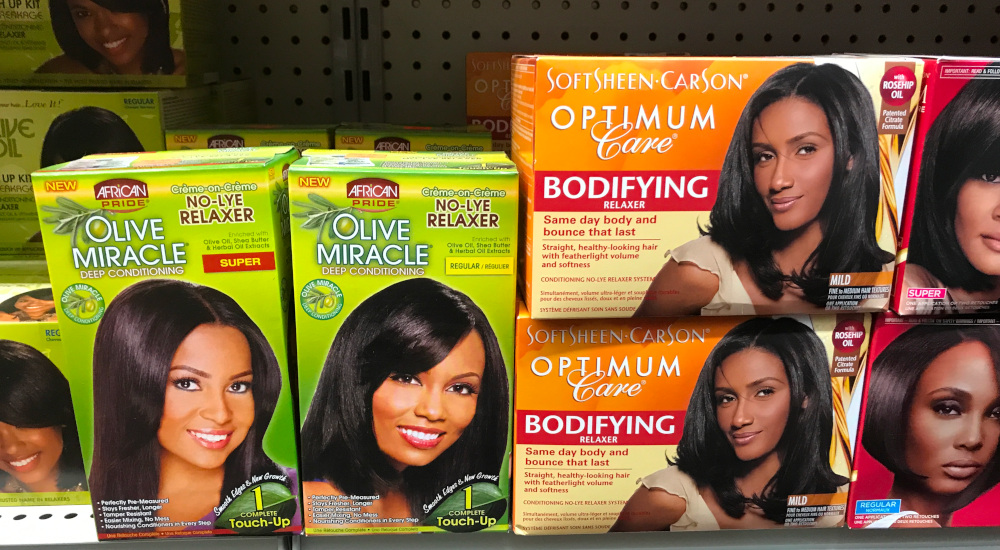Hair relaxers
Hair relaxers have long been used as a popular method to achieve straightened hair for individuals with curly or tightly coiled hair. While you may have a desire for a different hairstyle, it’s essential to be aware of the potential health consequences associated with using hair relaxers. The chemicals found in these products can have detrimental effects on both your hair and overall well-being. In this article, we will explore seven health consequences that should be considered before using hair relaxers.
Health consequences of using hair relaxers
Here are seven health problems associated with the use of hair relaxers:
- Hair and Scalp Damage: Hair relaxers contain strong chemicals, such as sodium hydroxide or calcium hydroxide, which can cause severe damage to your hair and scalp. These chemicals break down the ‘protein’ structure of your hair, resulting in dryness, brittleness, breakage, and thinning of the hair strands. Additionally, the harsh ingredients can irritate and damage the sensitive skin of the scalp, leading to redness, itching, and even chemical burns.
- Allergic Reactions: Some individuals may experience allergic reactions to the chemicals present in hair relaxers. These reactions can range from mild irritation to more severe symptoms like swelling, hives, or difficulty breathing.
- Scalp Irritation and Sensitivity: Frequent use of hair relaxers can lead to chronic scalp irritation and increased sensitivity. The chemicals can disrupt the natural balance of the scalp, causing dryness, itching, and inflammation. Over time, this may result in conditions like dermatitis or scalp infections, further compromising the health of your hair and scalp.
- Respiratory Issues: The toxic fumes emitted by hair relaxers can be harmful if inhaled. These fumes contain chemicals that can irritate the respiratory system, leading to breathing difficulties, coughing, and wheezing. Prolonged exposure to these fumes, particularly in poorly ventilated areas, may increase the risk of developing respiratory conditions such as asthma or bronchitis.
- Hormonal Disruptions: Some chemicals found in hair relaxers, such as phthalates, have been linked to hormonal disruptions in the body. Phthalates are known endocrine disruptors that can mimic or interfere with natural hormones, potentially affecting the proper functioning of the endocrine system. This disruption can have broader health implications, including fertility issues, menstrual irregularities, and hormonal imbalances.
- Increased Cancer Risk: Several studies have suggested a potential link between the use of hair relaxers and an increased risk of certain cancers. The chemicals in hair relaxers, particularly those containing lye, have been associated with an elevated risk of breast, uterine, and ovarian cancers.
- Psychological Impact: The pursuit of a specific hair texture through the use of hair relaxers can also have psychological consequences. The pressure to conform to societal beauty standards and the constant need to maintain a straightened hairstyle can lead to stress, low self-esteem, and a negative body image. Embracing natural hair and celebrating individuality can contribute to healthier self-esteem and overall well-being.

Conclusion
While hair relaxers may seem to offer a temporary solution for achieving straightened hair, the potential health consequences associated with their use should not be overlooked. From hair and scalp damage to respiratory issues and hormonal disruptions, the risks are significant. It is essential to consider the long-term impact on your health and explore alternative hairstyling options that promote natural hair beauty. Embracing and caring for your natural hair can lead to healthier hair, scalp, and overall self-confidence.
References
– Maria Fernanda Reis Gavazzoni Dias. Hair Cosmetics: An Overview – International Journal of Trichology
– A. L. Miranda-Vilela, A. J. Botelho, L. A. Muehlmann. An overview of chemical straightening of human hair: technical aspects, potential risks to hair fibre and health and legal issues
– Diane Koniecki 1 , Rong Wang, Richard P Moody, Jiping Zhu, Phthalates in cosmetic and personal care products: concentrations and possible dermal exposure.
– Wise, L. A., Palmer, J. R., & Rosenberg, L. (2012). Hair relaxer use and risk of uterine leiomyomata in African-American women. American Journal of Epidemiology, 175(5), 432-440.
– Alicia Stallings, Apra Sood. Hair-care practices in African American women: potential for allergic contact dermatitis
– Wise, L. A., Palmer, J. R., & Rosenberg, L. (2012). Hair relaxer use and risk of uterine leiomyomata in African-American women. American Journal of Epidemiology, 175(5), 432-440.
This article is copyrighted by Ital is Vital, 2025. Want to re-post this article? Visit our guidelines.
DISCLAIMER: THIS WEBSITE DOES NOT PROVIDE MEDICAL ADVICE
The information, including but not limited to, text, graphics, images and other material contained on this website are for informational purposes only. The purpose of this website is to promote broad consumer understanding and knowledge of various health topics. It is not intended to be a substitute for professional medical advice, diagnosis or treatment. Always seek the advice of your physician or other qualified health care provider with any questions you may have regarding a medical condition or treatment and before undertaking a new health care regimen, and never disregard professional medical advice or delay in seeking it because of something you have read on this website.
